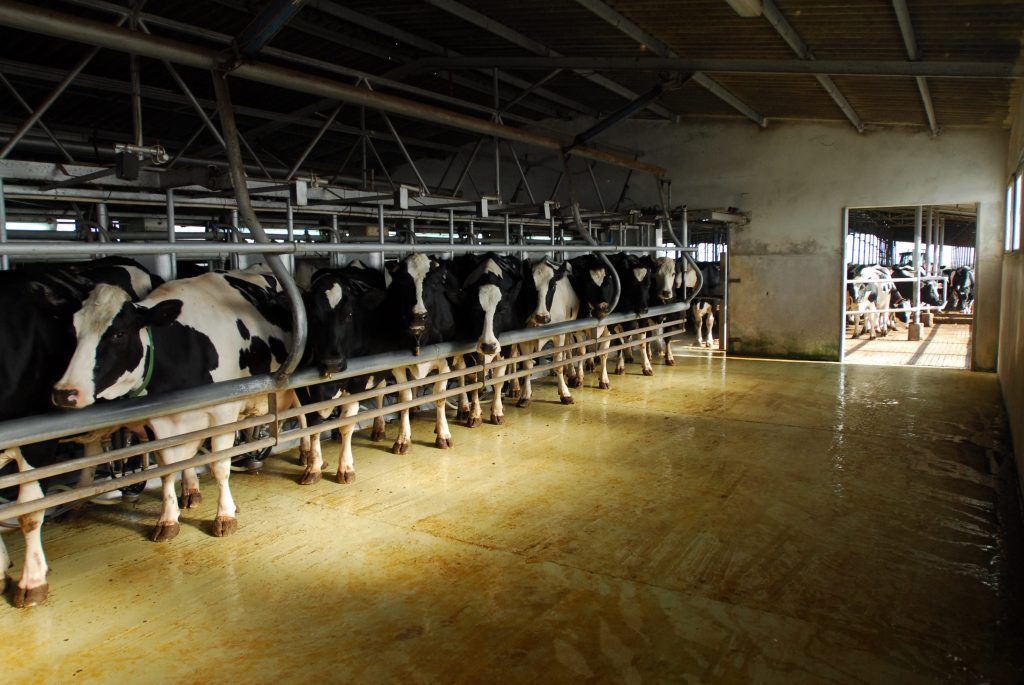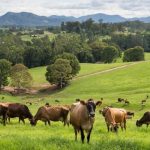
And then the rest of 2020 happened. Just as the COVID-19 pandemic rocked every corner of the globe, the U.S. dairy industry got hit with some devastating blows. But local dairy representatives think the industry is well on the path to recovery.
“I would have to say that beginning in January of this year, it’s been a very challenging time for our dairy farmers,” said Walter Bradley, government affairs director for Dairy Farmers of America. “We’ve had very poor milk prices, particularly in April and May. But the outlook has certainly improved.”
Dairy reps said the industry basically took three hits associated with the pandemic:
– The first sign of concern, Dairy Producers of New Mexico Executive Director Beverly Idsinga said, came internationally. When COVID-19 was starting to impact other countries, exports slowed down. That was a considerable hit, with Idsinga noting 17% of U.S. dairy products are exported.
– The double-whammy came when schools closed to limit community spread in the U.S. Schools are the largest customer for the industry, with milk a staple of nearly every student breakfast and lunch offering.
– The triple-whammy was a limitation of restaurant services. Sit-down dining was reduced and eliminated in late March in New Mexico, and just reintroduced in limited capacity in the last few weeks. Restaurants weren’t eliminated as customers, but they didn’t need as much product.
“Producers had to get innovative with ways to cut production,” Idsinga said. “This all happened during the spring flush when cows were producing their highest amounts.”
Because dairy is a perishable product, Idsinga said, “everybody was scrambling to repurpose the raw product” and some of the excess was converted to feed calves and make nutrient-rich plant food. In many cases, Bradley said, dairies took about 10% of their cows out of service earlier than they would in non-pandemic years.
Idsinga said the dairy industry worked with the state first to make sure it would remain an essential business as a food producer, and then to make their case on other public health order impacts on the industry. One such measure, Idsinga said, was an early desire to limit grocery store customers to two milk purchases. There was good intent to discourage hoarding with supply chains stressed, but with its large-scale customers sidelined supply wasn’t an issue.
The surplus was somewhat reduced by donations to food banks and federal purchases for aid programs, and Idsinga said the Southwest Cheese plant aggressively donated large blocks of cheese to Albuquerque’s Roadrunner Food Bank because it had the ability to cut the blocks into portions more appropriate for families.
Dairies established COVID-19 safe guidelines with the help of Robert Hagevoort of New Mexico State University.
Martha Kavanaugh of Glanbia told The News “there have been no COVID cases on site to date (at the Southwest Cheese plant) but we remain ever vigilant and highly focused on protecting our employees.
“At this time the plant is operating as normally as possible in these very difficult times.”
“COVID-19 is an unprecedented situation,” Bradley added. “It’s hard to predict and continues to evolve. First and foremost, we’ve got to ensure our supply chain is as up to date as possible and we’re following CDC guidelines. We’ve never had this kind of protocol, and we have to do that to make sure our product is safe for everybody.”
Prices are recovering, and Idsinga said news that schools will at least open to 50% capacity to start is good news provided the industry can make sure its products remain in school meals.
“Retail sales are continuing to be strong,” Bradley said. “We’re seeing gains at food services. We’re on the tight track. Maybe we’re not moving as fast as we like, but at least we’re moving forward.”
Regarding PFAS contamination, Bradley said the issue has honestly been put on a backburner with the pandemic, but at least there is money in recent defense legislation to mitigate the problem that has been traced to military installations and use of firefighting foam that contained the chemicals.
The road has been tough, but Idsinga said there are tough people in the industry.
“All of this hearkens back to Goliath,” Idsinga said of the late 2015 winter storm that wiped out thousands of cattle. “It reminds me of that so much, how our producers are resilient and able to weather these storms. They are family-owned businesses who are staying in it. They wouldn’t be in this industry if they didn’t love it. It warms my heart because they’re doing good things for the world.”
Staff Writer Peter Stein contributed to this report.

























